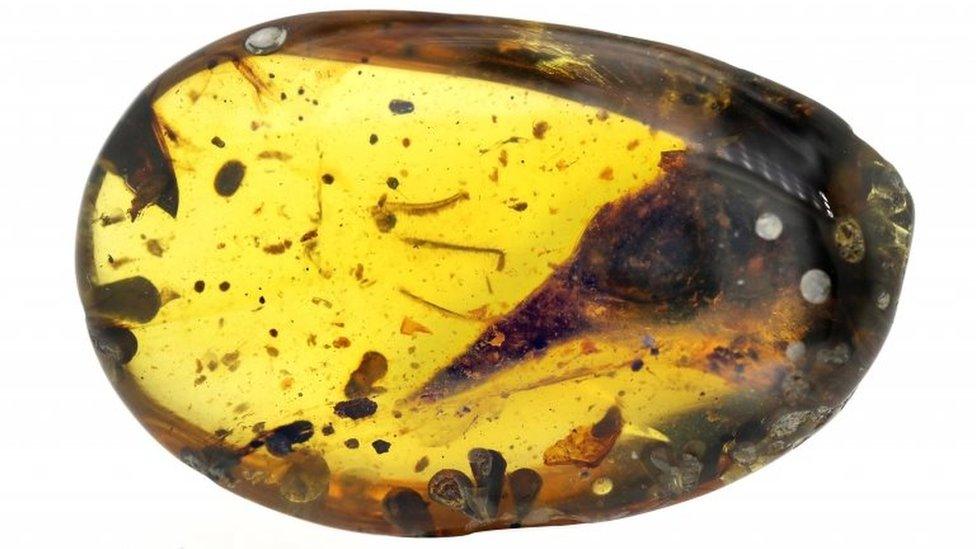Scientists discover smallest dinosaur ever known, even smaller than a bird
- Published
- comments

Can you spot the dinosaurs tiny head and eye?
Scientists have discovered what they say is the smallest known dinosaur, after finding a fossil of the newly discovered species trapped in amber.
It was found in northern Myanmar, a country in south-east Asia next to India, Bangladesh, China, Laos and Thailand.
The fossil shows a bird-like skull which is at least 99 million years old.
Researchers think the dinosaur would have been similar in size to the bee hummingbird - the tiniest bird alive.
Find out what dinosaur you are by taking this quiz!
Other small dinosaurs, such as the bird-like Microraptor, weighed hundreds of grams. But this one is even smaller, perhaps weighing about 2g, the same as the bee hummingbird.
The team of scientists have called the new species, Oculudentavis khaungraae, with one team member saying it's the "weirdest fossil" she has ever worked on.
They think it might shed light on how small birds evolved from dinosaurs - which were often bigger.
So what do we know about these new tiny bird-like dinosaurs?
As only the creature's head was preserved in the fossil, scientists were only able to study it from the neck up.
But even that has provided some exciting new discoveries for the team.
This is what the team of scientist think the creature might have looked like in the wild
They've revealed that these tiny dinos would have had exceptional vision.
The shape of its eyes and how they allowed light to come in, also suggests it was active in the daytime, rather than at night.
But it probably looked very different to other dinosaurs we're already familiar with, with eyes bulging out of the side of its head in a manner not seen in any other animal on earth.
The dinosaur's jaw had a surprisingly large number of teeth, which suggests that, despite its tiny size, it was a predator.
T-Rex's weren't on the menu though - it's likely its diet would be made up solely of insects.
The team even think the reason this particular dinosaur was so incredibly small might be because of the area it lived in.
For example, creatures that grow on islands or in isolation from other animals groups and species are often much smaller in size.
Co-author Dr Luis Chiappe, from the Natural History Museum of Los Angeles County, said: "It's lucky this tiny creature was preserved in amber, as such small, fragile animals aren't common in the fossil record.
"This finding is exciting because it gives us a picture of the small animals that lived in a tropical forest during the age of dinosaurs."
- Published17 May 2019
- Published22 March 2018
- Published11 January 2018
